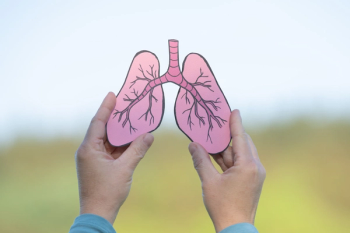
- November 2021
- Volume 87
- Issue 11
OTC Hearing Aids Offer Opportunities for Pharmacists
2017 Law Gives Pharmacies Ability to Help Patients Select and Adjust Devices
The Over-The-Counter Hearing Aid Act of 2017 is legislation that amended the Federal Food, Drug, and Cosmetic Act to direct the FDA to classify hearing aids as nonprescription medical devices and propose regulations guiding the use of these products.1
The bipartisan bill, passed into law by Congress in August 2017, included a provision giving the FDA 3 years to propose regulations that would reasonably ensure the efficacy and safety of the OTC devices.
Congress specified that FDA regulations would override any state law restricting patient access to the OTC devices. The deadline given to the FDA to finalize these regulations was August 18, 2020. However, the FDA missed this deadline, citing other regulations that it deemed more consequential amid the COVID-19 pandemic. It is unclear whether the FDA will fulfill the regulation requirement contained in the legislation to increase the safety of devices that are already available for millions of patients with hearing impairment.2
The FDA does not require hearing aid manufacturers to provide evidence of efficacy and safety to receive clearance to market these products unless the hearing aid is classified as an implantable bone-anchored device. Because of the lack of safety evidence, the primary evaluation of devices comes from clinicians and patients. Under the Over-the-Counter Hearing Aid Act of 2017, Congress encouraged the FDA to pursue hearing aid review under the 510K pathway, which reviews hearing aids for efficacy and safety. The FDA previously cleared Bose Corporation’s self-fitting air-conduction hearing aids using this 510K pathway. Requiring the FDA to regulate these devices under this pathway will increase safety and decrease the risk of hearing loss due to overamplification by ensuring the maximum volume output of devices is safe.3
More than 30 million Americans have mild to moderate hearing loss. Hearing impairment is frequently associated with dementia, depression, injurious falls, and an overall negative quality of life. Although prescription hearing aids provide major improvements in a patient’s quality of life, they are frequently underutilized, with just 15% to 30% of individuals routinely wearing them. This disparity in hearing aid use is because of limited patient access to audiologists and the high cost of hearing aids. The average cost of hearing aids is $2300, and they frequently are not covered by commercial insurance. Medicare does not cover hearing exams, hearing aids, or hearing aid fitting sessions. The COVID-19 pandemic negatively affected this population further with mask regulations and physical distance requirements,3 which means OTC hearing devices can improve even more patients’ quality of life.
Audiologists and Pharmacists
Audiologists are health care professionals whose primary focus is to evaluate, diagnose, treat, and manage hearing loss in patients of all ages. Most audiologists have earned a doctor of audiology degree, a doctor of science degree, or a PhD in balance and hearing sciences.4 Audiologists help patients select hearing aids that are best for their lifestyles.5 With the emergence of OTC hearing devices, many audiologists are hopeful this will increase their role in patient care. Some audiologists are suggesting that this new accessible technology may even be beneficial for children with attention-deficit/hyperactivity disorder or autism.6
These accessible devices also will open doors between pharmacists and audiologists to collaborate and ensure that the right device is selected for the patient.6
There may be an opportunity for audiologists to guide pharmacists on the correct fitting and usage of OTC hearing aids and play a large role in setting counseling guidelines to protect patient safety.
Pharmacists as accessible patient care providers will be particularly affected by this bill, as they are frequently sought out for their counsel on a multitude of OTC products. The Over-the-Counter Hearing Act will place a large responsibility on pharmacists to assist patients selecting a device, help with accurate adjustment of the device, and counsel patients on signs and symptoms of damage because of overamplification. It is increasingly important for pharmacists to stay up-to-date on literature regarding the newest devices.
Jordan Spurling is a PharmD candidate at the University of Kentucky College of Pharmacy in Lexington.
Joseph L. Fink III, JD, DSC (HON), BSPHARM, FAPHA, is a professor of pharmacy law and policy and the Kentucky Pharmacists Association Professor of Leadership at the University of Kentucky College of Pharmacy in Lexington.
Reference
1. S.670 — 115th Congress (2017-2018): Over-the-Counter Hearing Aid Act of 2017. Accessed October 7, 2021. https://www.congress.gov/bill/115th-congress/senate-bill/670
2. PresidentTrumpsignsOTChearingaidlegislationintolaw.TheHearingReview. August 19, 2017. Accessed October 7, 2021. https://www.hearingreview.com/inside-hearing/legislation/president-trump-signs-otc-hearing-aid-legislation-law
3. Franck KH, Rathi VK. Regulation of over-the-counter hearing aids - deafening silence from the FDA. N Engl J Med. 2020;383(21):1997-2000. doi:10.1056/ NEJMp2027050
4. What is an audiologist? American Academy of Audiology. Accessed October 7, 2021. https://www.audiology.org/what-is-an-audiologist
5. Hearing aids. American Academy of Audiology. Accessed October 7, 2021. https://www.audiology.org/consumers-and-patients/managing-hearing-loss/hearing-aids/
6. President’s message. American Academy of Audiology. Accessed October 7, 2021. https://www.audiology.org/audiology-today-mayjune-2017/presidents-message-expanding-our-profession
Articles in this issue
almost 4 years ago
Medical Billing Is Now Part of Job Descriptionalmost 4 years ago
November 2021 Rx Product Newsalmost 4 years ago
Pharmacists Play Critical Role in Pain Assessmentalmost 4 years ago
Pet Peeves: November 2021almost 4 years ago
Ability to Produce Immunity to Influenza A (H3N2) Called Into Questionalmost 4 years ago
Generic Product News November 2021almost 4 years ago
Consider a Career Move to Remote Medication Therapy Managementalmost 4 years ago
Nevada Board Stuns Nonresident Pharmacists With New Requirementsalmost 4 years ago
OTC Case Studies: Back PainNewsletter
Stay informed on drug updates, treatment guidelines, and pharmacy practice trends—subscribe to Pharmacy Times for weekly clinical insights.
















































































































































































































